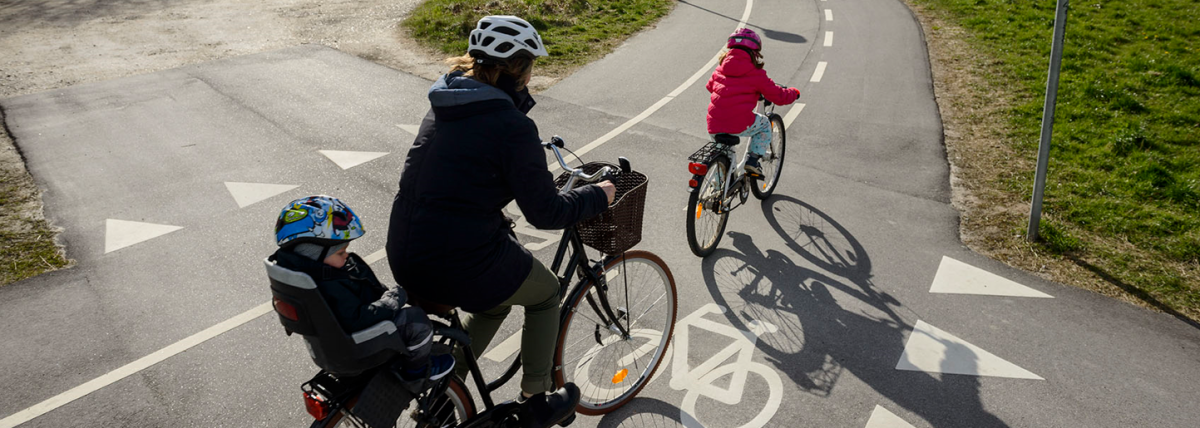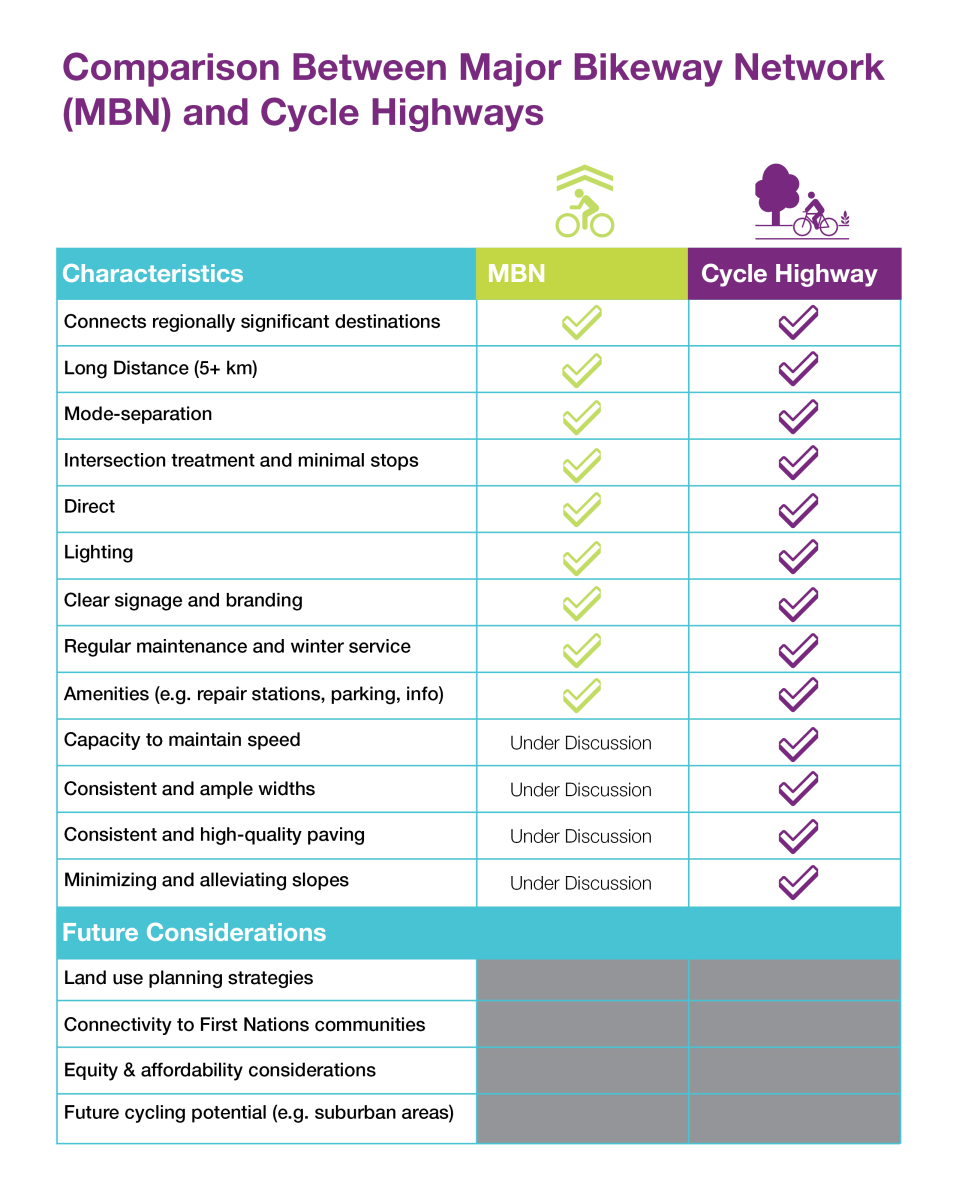Main menu
Support a Cycle Highway Network for Metro Vancouver
 Photo credit: Cycle Superhighways, Capital Region of Denmark
Photo credit: Cycle Superhighways, Capital Region of Denmark
HUB Cycling is calling for a network of cycle highways to be built across Metro Vancouver
Nearly half of Metro Vancouverites (41%) want to cycle more, but the most significant barrier is unsafe and uncomfortable cycling facilities1. Over half of the cycling network in Metro Vancouver is uncomfortable for most people2.
Metro Vancouver is growing rapidly while facing increasing traffic congestion, climate change, and social equity concerns. Key regional goals, including Transport 2050, Metro 2050, Climate 2050, and Clean BC, recognize the need for more active and sustainable transportation options.
Many current cycling trips are short, with an average of fewer than five kilometers3. Longer cycling trips could replace more motor vehicle trips, and the rise of e-bikes and other micromobility devices makes longer distance journeys easier (e.g. 10+ kilometres). There is strong support among people who cycle for long-distance cycle highways connecting municipalities and destinations across Metro Vancouver4.
 View the Cycle Highways Webpage
View the Cycle Highways Webpage

Download the Cycle Highways in Metro Vancouver Report (PDF)
Lend your support to help make a cycle highway network in Metro Vancouver a reality.
How can you help? Sign this position paper in support of Cycle Highways
The following organizations have endorsed the position paper in support of cycle highways:
* BC Cycling Coalition
* Modo the Car Co-op
* Symmetrix Exercise & Rehab
* Vancouver Bike Share Inc | Mobi
* Better Environmentally Sound Transportation (BEST)
* Surrey Board of Trade
Cycle highways are the highest quality bike routes, covering long distances (5km+) and providing regional connections between major destinations.
These bike routes are direct, paved, protected, lit, and ample width, with intersections prioritizing people cycling. These characteristics, along with clear signage, branding, and regular maintenance, ensure cycle highways are safe, comfortable, and easy to use for people of all ages and abilities at all times of the day and year.
“Supporting a regional major bike network in Metro Vancouver is one of the bold moves called for in Transport 2050, and I am excited to see HUB Cycling putting their advocacy work towards building a regionally connected cycle highway network that would provide new transportation options for our region's residents.”
- Jonathan Cote
Mayor, City of New Westminster and Chair of the Mayors' Council
Building cycling infrastructure is relatively inexpensive, and cycle highways have an excellent return on investment. The rise of e-bikes pairs perfectly with cycle highways, which help attract cycle tourism, a booming industry.
Cycle highways are gaining popularity across the world. Montreal has recently constructed the first phase of a 184-kilometre cycle highway network5. Denmark opened its first cycle highway route in 2012 and now boasts more than 60 routes in its cycle highway network, which is estimated to create 720,000 fewer car journeys and 55,000 fewer hours spent in traffic every year.
TransLink’s conceptual Major Bikeway Network could include cycle highways.
TransLink has worked with stakeholders across Metro Vancouver to develop the Major Bikeway Network (MBN). This is a conceptual network of high-quality, long-distance, safe, comfortable, and regionally significant bikeways. Cycle highways and the MBN have many similarities, as illustrated below. As the exact details of the MBN are still in discussion, cycle highways represent a possibility of how the MBN could look.

HUB Cycling’s Recommendations for a Cycle Highway Network
- Create a working group with stakeholders from across Metro Vancouver to discuss what cycle highways in the region should look like and how to implement them.
- Design a shared vision and goals for a cycle highway network.
- Conduct an evidence-led analysis to inform the design of a cycle highway network. Work previously done on developing the Major Bikeway Network (MBN) will likely have a strong influence.
- Secure funding from higher levels of government for the construction of cycle highways, given their regional importance and ability to address several issues, including air pollution and congestion.
- Capitalize on upgrading existing bike infrastructure. Routes across Metro Vancouver have the potential to be upgraded to a cycle highway, including the Central Valley Greenway and BC Parkway. Numerous routes already identified as part of the MBN could be upgraded to cycle highways.
- Start building a cycle highway network!
How can you help?
Donate to HUB Cycling here
1 A Regional Cycling Strategy for Metro Vancouver
2 The State of Cycling in Metro Vancouver
4 See ‘Bike to Work Week - Survey Responses’ as detailed in the Cycle Highway report
